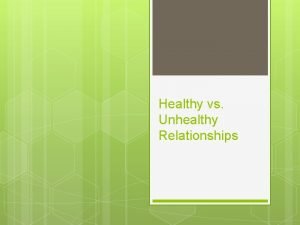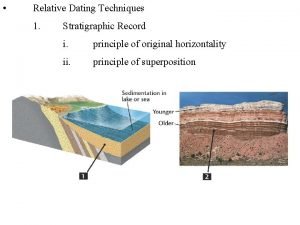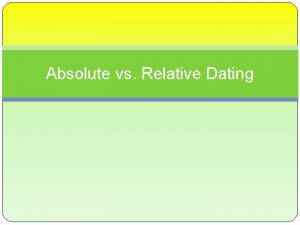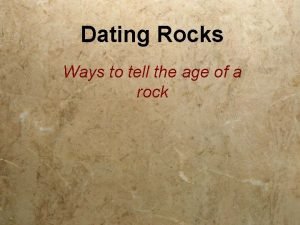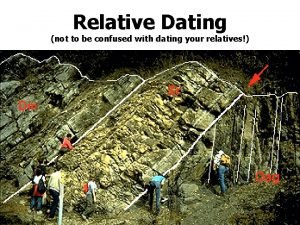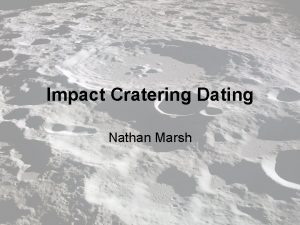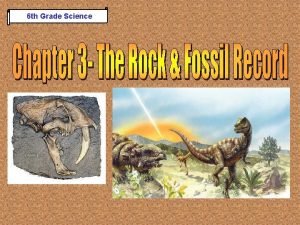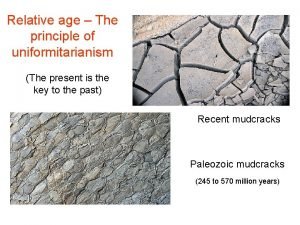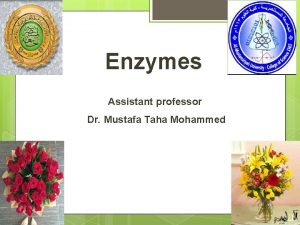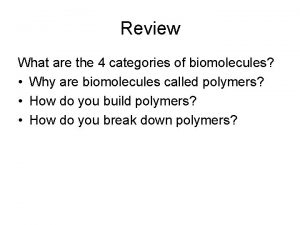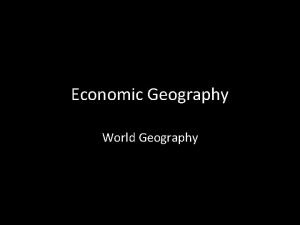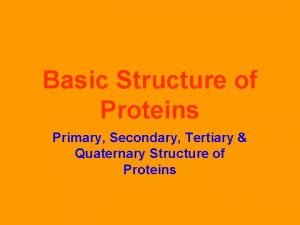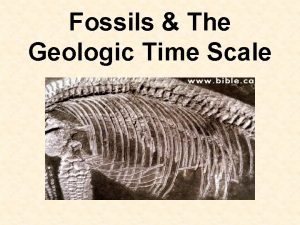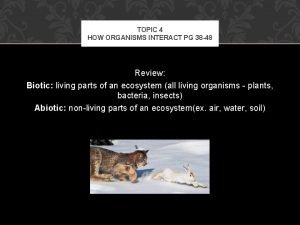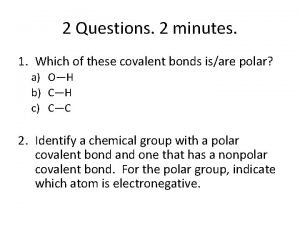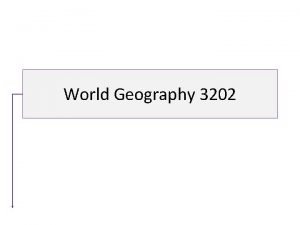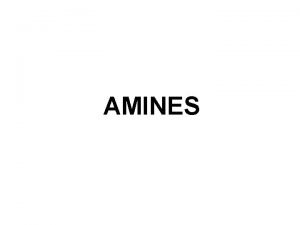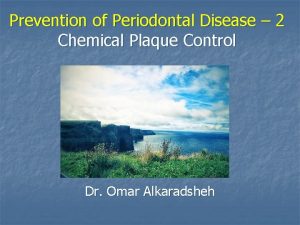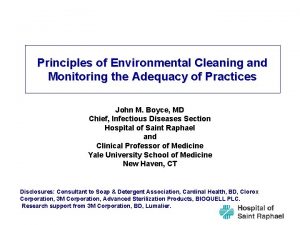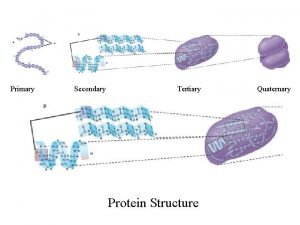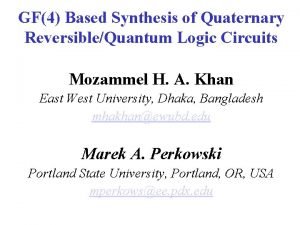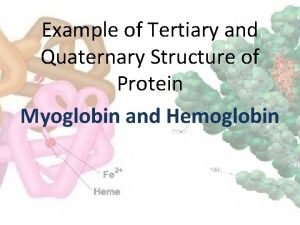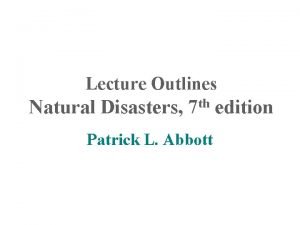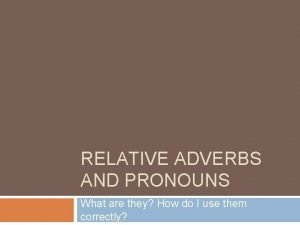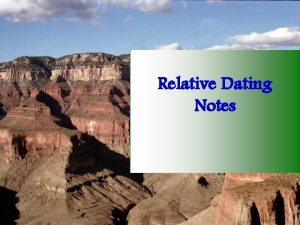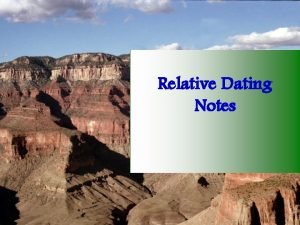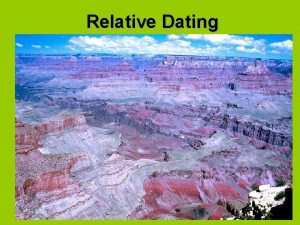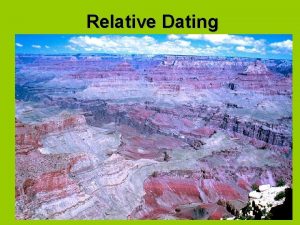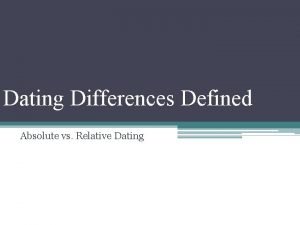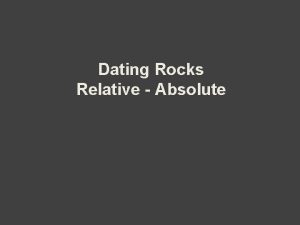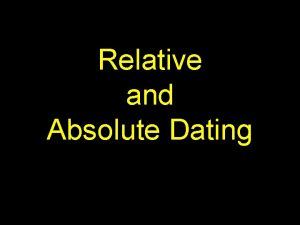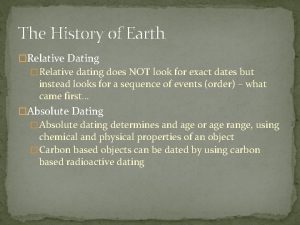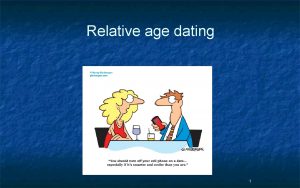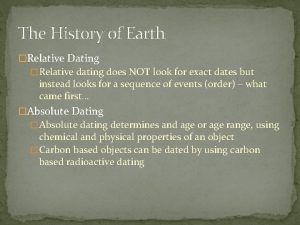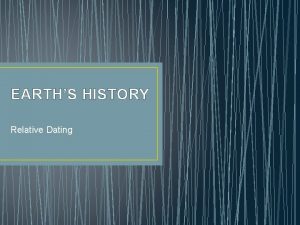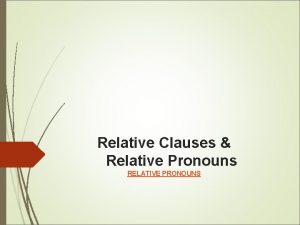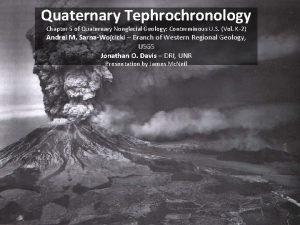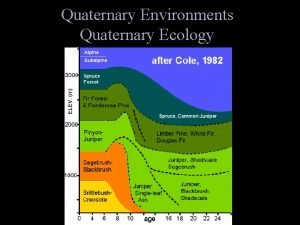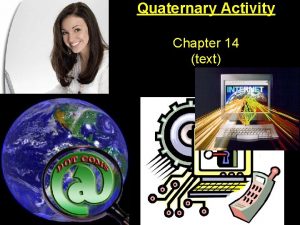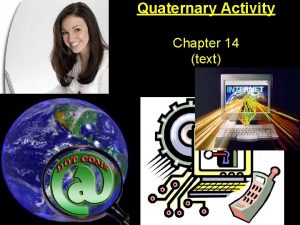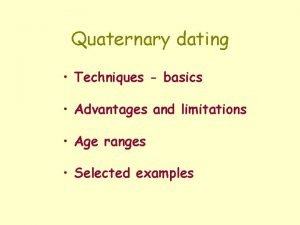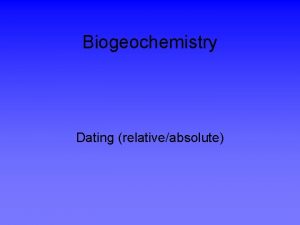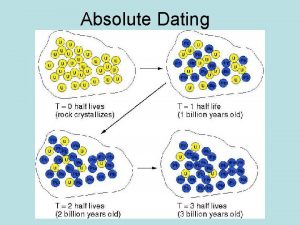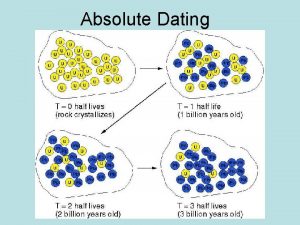Quaternary Dating Techniques Relative dating techniques Crosscutting relationships






































- Slides: 38

Quaternary Dating Techniques

Relative dating techniques: Cross-cutting relationships Soil development Terrace height

Numeric Age Dating Techniques 1. Radiocarbon 2. Cosmogenic Nuclide exposure dating 3. Luminescence dating

Radiocarbon Dating Theory: Most Carbon is 12 C (6 protons, 6 neutrons) (98. 9%) Some carbon is 13 C (stable) (1. 1%) and 14 C (unstable) (trace) (1010% = one in a million) 14 C formed in atmosphere from 14 N Radioactive: Half life of 14 C = 5730 +/- 401 yrs 1 Libby Half life is 5568 +/- 30 yrs

Percent Parent Isotope Radioactive Decay Curve Time (half-lives) 5730 yrs, 50% remaining

2 Half-lives 11, 460 yrs, 25% remaining

3 Half-lives 17, 190 yrs, 12. 5% remaining

4 Half-lives 22, 920 yrs, 6. 25% remaining

5 Half-lives 28, 650 yrs, 3. 13% remaining

6 Half-lives 34380 yrs, 1. 56% remaining

7 Half-lives 5730 yr * 7 = 40, 110 yrs, 0. 78% remaining Remember only (0. 000001%) is 14 C to begin with

RADIOACTIVE DECAY CURVE % Atoms Daughter Isotope Parent Isotope # Half-Lives

Radiocarbon Dating Provides: An age estimate of organic material Age Range: ~100 -200 yr to ~40 kyr Limitations: Need organic material to date Production rate changes not constant – must Calibrate 14 C age to calendar age

Radiocarbon Calibration curve 2100 -3100 14 C yr BP 2600 +/- 10014 C yr = 2700 -2780 cal yr (80 yrs) 1: 1 line

Radiocarbon Calibration curve 2100 -3100 14 C yr BP 1: 1 line 2500 +/- 10014 C yr = 2350 -2750 cal yr (400 yr)

Radiocarbon Dating Strengths q Organic material is common in many deposits (not all) q Relatively easy technique, well understood

Radiocarbon Dating Limitations q Provides age of organic material, may not be the same as the age of the sediment q Must be calibrated to calendar years q Contamination of sample

Cosmogenic Nuclide Surface Exposure Dating Theory: The Earth is constantly bombarded by high energy cosmic particles When cosmic rays hit materials on the Earth’s surface new nuclides are produced (not naturally found in rock) Over time, these new nuclides accumulate The concentration of these nuclides is related to the length of time the minerals have been exposed at the Earth’s surface



Concentration of 10 Be over time Assume no erosion

Provides: Cosmogenic dating An age estimate of the length of time the material has been exposed at the earth’s surface Minimum age of underlying deposit/landform Age Range: 1 ka to ~4 Ma, dependent on nuclide Materials dated (examples): Rock – boulders on Moraines Soils – accumulation in soils on terraces Limitations: erosion, sheilding

Example 1 – exposure dating of boulders on moraines In Patagonia Kaplan et al. 2005


Sources of error? ?

Example 2 – Dating sediment Profiles in terraces Wind River Terraces Hancock et al. 1999

Sampling for Cosmo


Terrestrial Cosmogenic Nuclide (TCN) Dating of Quaternary Surfaces Strengths q q Can date surfaces and deposits where material for other dating methods is lacking Provides an age estimate for abandonment of surfaces

Terrestrial Cosmogenic Nuclide (TCN) Dating of Quaternary Surfaces Limitations q q Surface must be stable (no erosion or deposition) Minimum age estimate for the time of deposition

Optically Stimulated Luminescence Dating Theory: During transport, sediment is exposed to sunlight, which resets the luminescence signal = zero age After deposition, the luminescence signal grows with time due to exposure to radiation in the surrounding sediment The amount of luminescence given off by a sample related to the length of burial

BLEACHING AND SIGNAL GENERATION


OSL sample collection

AGE Age = Equivalent Dose (Gy) Dose-Rate (Gy ka-1) = ka

OSL dating Provides: An age estimate for the timing of sediment deposition Actual age of the deposit Age Range: 100 yrs to ~300 ka Materials dated: Sand to silt Technique used to date sediment from a wide range of Deposits (eolian, fluvial, colluvial, lacustrine, marine…) In addition to archeological applications (pottery, burials…)

Optically stimulated luminescence (OSL) Strengths q q q Dates the time of sediment deposition Suitable age range 0 -100 ka, up to 350 ka (beyond the range of radiocarbon) dates sand silt – found in most deposits

Optically stimulated luminescence (OSL) Limitations q Incomplete solar resetting of sediment q Requires presence of silt or sand lenses in deposit q Uncertainties in dose-rate environment over time
 In traditional dating patterns dating behavior
In traditional dating patterns dating behavior Healthy vs unhealthy dating relationships
Healthy vs unhealthy dating relationships Relative age
Relative age Relative dating examples
Relative dating examples Geopuzzle
Geopuzzle Relative dating
Relative dating Rock dating
Rock dating Relative age dating
Relative age dating Relative dating
Relative dating Relative dating
Relative dating Relative dating
Relative dating Relative dating
Relative dating Conformity
Conformity Apoenzyme is
Apoenzyme is Nitrogen base
Nitrogen base Quaternary economic activity
Quaternary economic activity Primary care secondary care tertiary care
Primary care secondary care tertiary care Primary secondary tertiary quaternary structure of proteins
Primary secondary tertiary quaternary structure of proteins Quaternary period organisms
Quaternary period organisms Quaternary consumer
Quaternary consumer Quaternary structure of protein
Quaternary structure of protein What are the levels of economic activity?
What are the levels of economic activity? Secondary sector geography definition
Secondary sector geography definition Tertiary amine
Tertiary amine Is a owl a secondary consumer
Is a owl a secondary consumer Bisguanides
Bisguanides Advantage and disadvantage of quaternary ammonium compounds
Advantage and disadvantage of quaternary ammonium compounds Primary secondary and tertiary economic activities
Primary secondary and tertiary economic activities What is quaternary consumer
What is quaternary consumer Primary secondary and tertiary protein structure
Primary secondary and tertiary protein structure Binary to quaternary
Binary to quaternary Quaternary structure
Quaternary structure Quaternary extinction
Quaternary extinction What are quaternary consumers
What are quaternary consumers Advantage of iodine
Advantage of iodine Relative adverb examples
Relative adverb examples Relative clauses and relative pronouns stage 15
Relative clauses and relative pronouns stage 15 Marginal frequency distribution
Marginal frequency distribution The person who phoned me last night is my teacher.
The person who phoned me last night is my teacher.

